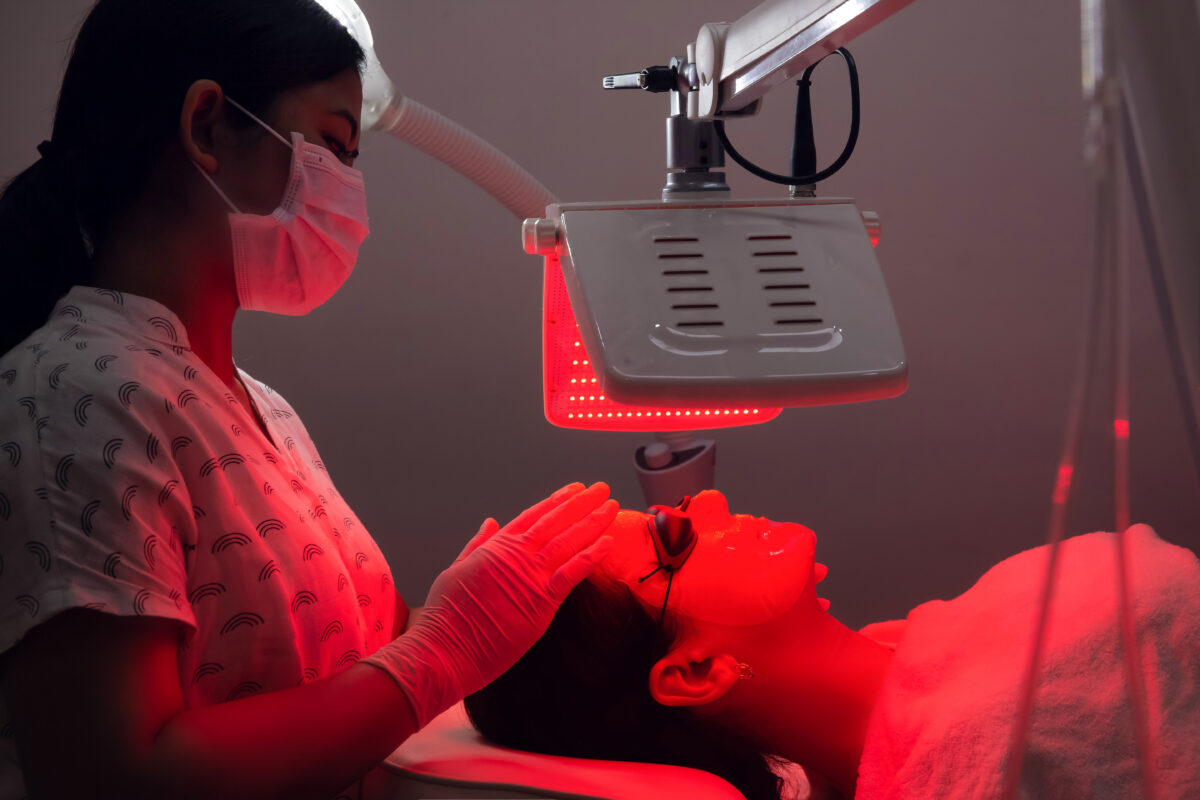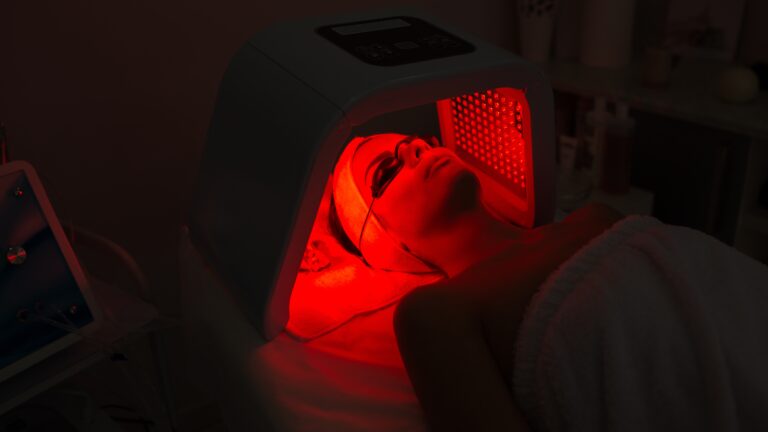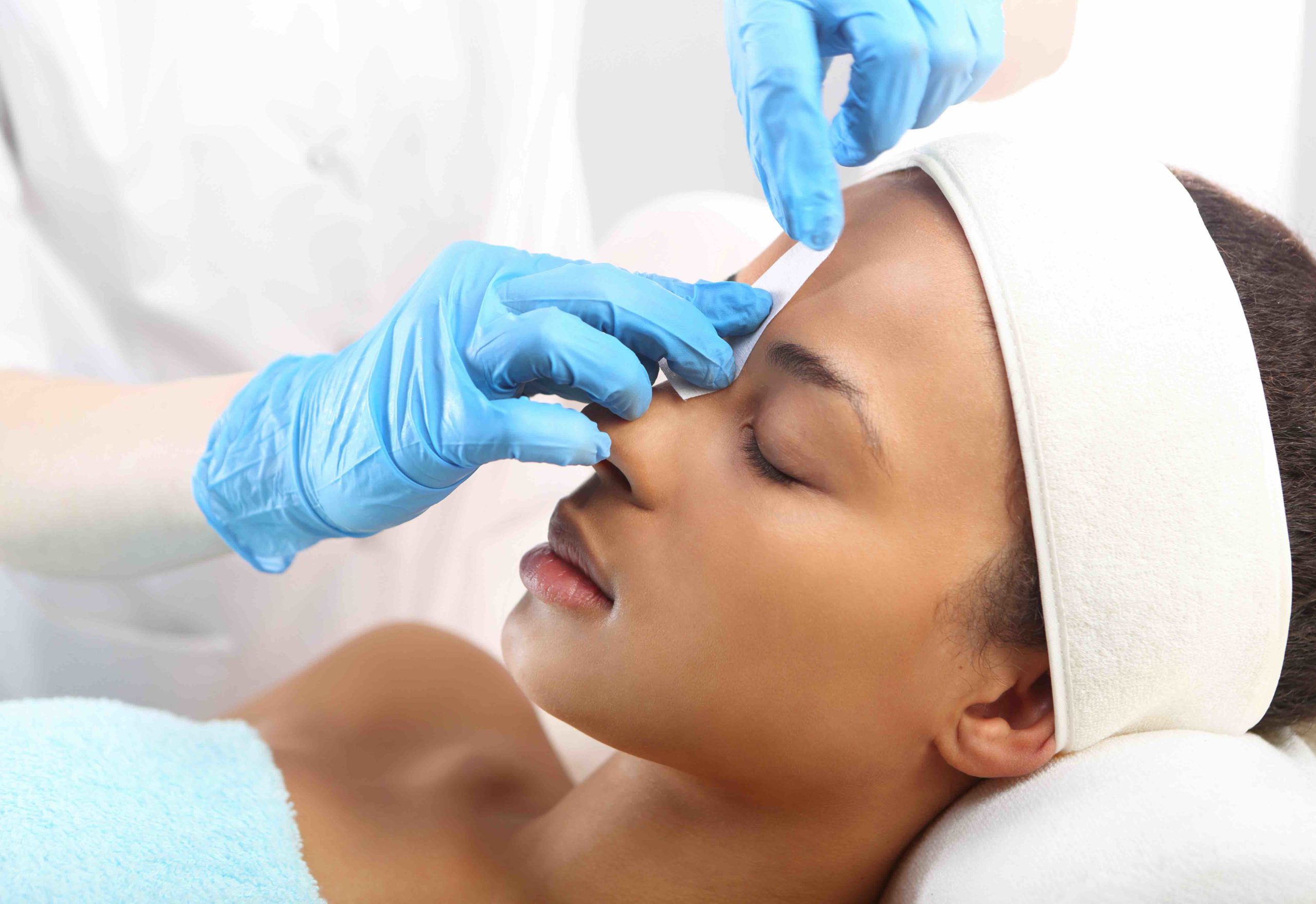Have you ever heard of Red Light Therapy? If not, it’s time to learn about this revolutionary treatment that has many health benefits. From skin rejuvenation and improved sleep quality, to enhanced cognitive performance and reduced inflammation, red light therapy is quickly becoming one of the most popular healing treatments out there. And with good reason too – its natural, non-invasive approach makes it a safe option for people of all ages and backgrounds.
Also known as photobiomodulation or low level laser therapy (LLLT), red light therapy uses visible red and near infrared light wavelengths between 630nm – 810nm to penetrate deep into the body’s tissue causing biological changes which occur at a cellular level. By stimulating specific metabolic activities in cells such as mitochondrial activity, these biochemical reactions can lead to clinical effects such as pain relief, wound repair and anti-inflammatory action.
From professional athletes looking to improve their physical performance to those seeking joint pain relief or an immune system boost, more and more people are turning to red light therapy as part of their daily wellness routine. In the following article we will cover the science behind red light therapy; explore some of its potential applications; discuss safety concerns; plus look at ways you can incorporate it into your own life for better overall wellbeing.
Red light therapy overview
Red light therapy is an increasingly popular form of treatment that uses natural, visible red light to help treat a variety of conditions. It has been used for centuries as a traditional healing practice and has recently gained attention in the medical community as a safe and effective way to treat skin issues, chronic pain, mental health disorders, hair loss, wound healing and more.
The main benefits of this type of therapy come from its ability to reduce inflammation and stimulate cell growth. This can be done by exposing the body to specific wavelengths of red or near-infrared light which helps to activate cells’ mitochondria – often referred to as their “energy batteries” – allowing them to produce energy more efficiently. The increased cellular energy then leads to improved tissue repair, better circulation and reduction in pain levels. Red light therapy also triggers the release of endorphins which are known for creating feelings of wellbeing and reducing stress.
Not only does it have potential therapeutic applications but many people who use red light therapy report feeling energized and having improved overall physical performance after their sessions. With minimal side effects, low risk profile and positive outcomes reported by users, it’s no wonder why so many people are turning to this alternative form of medicine!

Benefits of red light therapy
Red light therapy is becoming increasingly popular as a safe and non-invasive way to improve health. But what exactly are the benefits of this type of treatment? Let’s take a look.
The most commonly reported benefit of red light therapy is improved skin appearance and texture. This can include reduced wrinkles, improved elasticity, increased hydration, and an overall more even complexion. Additionally, some people report that their acne scars have diminished with regular use of red light therapy. Here are just a few ways in which it could help your skin:
- Stimulates collagen production for firmer looking skin
- Boosts cell regeneration for healthier looking skin
- Reduces inflammation for clearer looking skin
Another potential benefit associated with red light therapy is better sleep quality. By exposing yourself to the warm glow of the lights before bedtime, you may find it easier to fall asleep and stay asleep throughout the night. Plus, deeper sleep leads to improved mental clarity during waking hours so you’re able to be more productive during your day! To maximize these effects, aim to do your session at least 2-3 hours prior to when you’d like to go to bed each night.
How does red light therapy work?
Red light therapy is a type of phototherapy that has been used to treat various skin conditions and promote healing. It works by using infrared or red LED lights to stimulate the cells in our body, causing them to absorb more energy from the environment. This increased energy helps the cells regenerate faster and can even help reduce inflammation.
Red light therapy harnesses wavelengths between 600-700nm which are absorbed into deeper layers of the skin than ultraviolet rays and other types of visible light. When these photons interact with cytochrome c oxidase – an enzyme found in mitochondria – they boost cellular metabolism, leading to improved cellular health overall. Additionally, it helps improve circulation and lymphatic flow, allowing nutrients and oxygen to reach damaged areas quickly for faster healing.
In addition, many studies have shown that red light therapy can also be beneficial for mental wellness; it promotes relaxation as well as sleep quality due to its ability to balance hormones like melatonin and serotonin. All in all, red light therapy can offer numerous benefits for physical and mental wellbeing without any significant side effects.
Is red light therapy safe?
When it comes to red light therapy, safety is a top concern. Red light therapy involves exposing the skin to specific wavelengths of light emitted from LED bulbs. While this type of exposure may sound sort of risky, the truth is that when administered properly, red light therapy can be incredibly safe and effective.
The risk associated with red light therapy depends on how intense and for how long you are exposed to the lights. Typically, treatments involve low doses of radiation in order to activate cellular processes without causing any damage or harm. It’s important to note that studies have suggested using caution if you’re pregnant, as there haven’t been enough tests done yet on its effects during pregnancy.
Given the overall safety profile of red light therapy, many people trust it as an effective treatment option for a variety of different conditions such as skin healing and pain relief. Ultimately, it’s recommended to do your own research and consult with a health professional prior to starting any kind of new treatment regimen. That way, you can make sure both your body and mind feel comfortable before taking part in something like red light therapy sessions.
Types of red light therapy
When it comes to red light therapy, there are several different types that people can use. The type of treatment used will depend on the individual’s condition and what they hope to achieve from this kind of therapy. Broadly speaking, there are two main categories: low-level laser/light therapy (LLLT) and photobiomodulation (PBM).
LLLT uses longer wavelengths of light—typically in the range of 600 nm–1000 nm—to stimulate cells at a variety of depths beneath the skin’s surface. It has been found to help reduce inflammation, speed up healing time for injuries, improve circulation, and even reduce wrinkles. PBM is similar but utilizes shorter wavelengths of light—usually between 400nm and 650nm—that penetrate deeper into tissue than LLLT does. This form of red light therapy is most commonly used for muscle pain relief and wound healing.
Overall, both forms of red light therapy have been found to be effective treatments for various conditions and ailments. By utilizing either or both forms of treatment depending on an individual’s needs and goals, individuals may find significant improvements in their health and well-being with regular red light sessions.
How to prepare for red light therapy
Preparing for red light therapy is essential to ensure you get the best results. It’s important that you plan ahead and make the necessary arrangements before beginning your treatment. Here are some tips on how to do just that.
Consult with a medical professional who specializes in this form of therapy. They will be able to give you advice about what type of device or system would work best for your needs and provide more detailed instructions for use. Additionally, it may also be helpful to discuss any potential side effects or risks associated with red light therapy so you can take proper precautions.
Figure out where you’ll perform the treatments and gather all the items needed beforehand. Depending on which type of device you’re using, there may be specific safety measures that need to be followed as well as other equipment required such as protective eyewear and gloves. Taking time now to get organized means less stress later when it comes time for treatment!
TIP: Make sure to charge any electronic devices that might be part of your therapy session prior to starting. This way you won’t have an interruption while in the middle of your treatment due to low battery power!

What to expect during red light therapy
When it comes to red light therapy, many people are unsure of what they can expect during a session. Fortunately, the process is quite straightforward and easy to understand. Here’s an overview of what you should know before scheduling your next appointment.
To begin with, most sessions will last between 8-20 minutes depending on the size and area being treated. During this time, you’ll be asked to sit or lie down in front of a panel that emits the light directly onto your skin. It’s important to remain still throughout the entire duration as any sudden movements may reduce the effectiveness of the treatment.
In addition to these basics, there are also some other things you should consider when preparing for your therapy session:
- Wear comfortable clothing – You won’t need to undress but make sure that whatever you wear isn’t too restrictive or tight so that you don’t feel uncomfortable while lying under the lights.
- Remove jewelry – Any metal items such as rings or necklaces could interfere with how well the light works so take them off beforehand if possible.
- Protect your eyes – You’ll want to use protective glasses or goggles while undergoing treatment since exposure to bright lights can damage your vision over time.
- Stay hydrated – Make sure you drink plenty of fluids prior and after each session as dehydration can impact its overall effectiveness.
- Apply sunscreen – If necessary, apply SPF 30+ sunscreen before beginning your session since the sun rays emitted from the panels can cause sunburns if left unprotected for long periods of time.
At the end of every appointment, you’ll likely experience mild warmth due to increased circulation in the body which is completely normal and shouldn’t cause any discomfort. As always, be sure to follow up with any questions or concerns you have with your practitioner after each visit for further clarification about results and progress made towards achieving desired goals!
Red light therapy alternatives
When it comes to treating skin conditions or improving overall complexion, red light therapy is an increasingly popular option. But for those who are looking for alternatives, there are a few options available. In this article, we’ll explore some of the possible substitutes for red light therapy.
One possibility is LED (light-emitting diode) masks and devices. These use different colors of LEDs to target certain areas on the face or body in order to treat signs of aging and improve skin tone. They can be bulky and expensive but they have been effective at delivering results similar to that of red light therapy.
Another alternative is laser treatments such as IPL (intense pulsed light). This treatment uses high intensity bursts of visible light energy delivered through tiny lenses to penetrate deep into the dermis layer of the skin where collagen formation begins. It stimulates regeneration while targeting melanin production and pigmentation issues with precise accuracy. Although this method may cost more than other options, its precision makes it worth considering if you’re looking for long lasting results without having to commit to multiple sessions like you would with red light therapy or LED masks/devices.
No matter which option you choose, make sure to consult your dermatologist first before making any decisions about treatment so that you understand all potential risks involved as well as how best to proceed moving forward.
Optimal red light therapy wavelengths
Red light therapy is a type of photobiomodulation. It utilizes specifically chosen wavelengths and frequencies to promote healing, reduce inflammation, and improve overall health. So what is the optimal wavelength for red light therapy?
When it comes to finding the best therapeutic benefits from red light therapy, it’s important to consider both the frequency and wavelength used in treatment. Red light ranges between 600nm – 700nm, with 630nm being one of the most commonly used options. This range offers several advantages:
- Shorter wavelengths are absorbed more easily by cells, meaning they can penetrate deeper into tissue;
- Lower energy levels mean that shorter wavelengths have fewer side effects than other options;
- Longer exposure times may be necessary for treatments when using longer wavelengths;
- Shorter wavelengths are capable of inducing stronger biological reactions within cells.
In addition to choosing an appropriate wavelength, it’s also important to identify which area or condition you want to treat before selecting your device. Different devices offer different power outputs so make sure you do your research first! With these considerations taken into account, you’ll be well on your way towards achieving successful results from red light therapy.
How long does the effect of red light therapy last?
The answer depends on several factors, such as the type of red light therapy being used and the condition being treated. Generally speaking, however, people who use red light therapy see improvements for up to six months after their initial treatment. This means regular follow-up sessions are needed if you want to maintain your results over time.
It’s important to note that while red light therapy can improve many different types of skin problems, it won’t necessarily cure them permanently. To get the best results from this type of treatment, you should speak with your doctor or dermatologist about the right frequency and duration of treatments for your specific situation. That way you can ensure lasting benefits from your red light therapy experience!
Conclusion
In conclusion, red light therapy offers a safe and non-invasive option for treating various skin conditions. The optimal wavelength for treatment is typically in the range of 630 to 670 nanometers, depending on the condition being treated. While it may work well for many people, everyone’s response to this therapy will be different, so it’s important to talk with your doctor about any potential risks or contraindications before starting treatments. Finally, keep in mind that while results vary from person to person, most users report seeing positive effects after just one session – though you may need multiple sessions over time to maintain these benefits. Ultimately, if you’re looking for an alternative form of treatment that has some proven health benefits and minimal side effects, then red light therapy could be worth exploring further.





